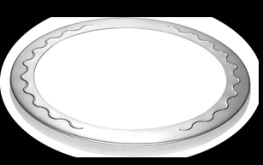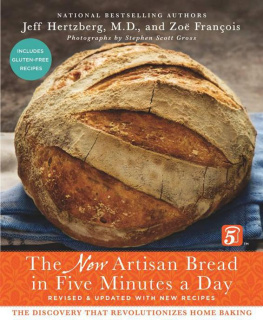PRETZEL
MAKING
at home
Andrea Slonecker
Photographs by Alex Farnum

Text copyright 2013 by Andrea Slonecker.
Photographs copyright 2013 by Alex Farnum.
All rights reserved. No part of this book may be reproduced in any form without written permission from the publisher.
Library of Congress Cataloging-in-Publication Data available.
ISBN 978-1-4521-2412-4
Designed by Alice Chau
Typesetting by Alice Chau & Helen Lee
Illustrations by Lydia Ortiz
Front cover and author photographs by David Reamer
Prop styling by Christine Wolheim
Food styling by Erin Quon
This book is typeset in Vitesse, Fairplex, DIN, Eames Century Modern, and Fette Fraktur.
Becks is a registered trademark of Brauerei Beck & Co.
Bitburger is a registered trademark of Bitburger Braugruppe GmbH.
Bobs Red Mill is a registered trademark of Bobs Red Mill Natural Foods Inc.
Formica is a registered trademark of the Diller Corporation.
Microplane is a registered trademark of Grace Manufacturing Inc.
Paulaner is a registered trademark of Paulaner Brauerei GmbH & Co. KG.
Pop Rocks is a registered trademark of Zeta Espacial S.A.
Snyders of Hanover is a registered trademark of Snyders-Lance Inc.
Valrhona is a registered trademark of Valrhona S.A.
Warsteiner is a registered trademark of Warsteiner Brauerei Haus Cramer KG.
Weihenstephaner is a registered trademark of Bayerische Staatsbrauerei.
Wondra is a registered trademark of General Mills Inc.
Chronicle Books LLC
680 Second Street
San Francisco, California 94107
www.chroniclebooks.com
For my family, including my mentor, Diane Morgan,
who made this big dream of mine possible.
CONTENTS

INTRODUCTION
In Germany and the surrounding region, pretzels symbolize the craft of baking. For centuries, large pretzel-shaped signs made of wood or iron have hung above the doorways of bakeries in this area of Europe. The tradition started in the Middle Ages, when most peasants were illiterate. The distinctive shape of a pretzel was easily recognized, indicating that freshly baked bread was sold inside. The pretzel twist has come to be one of the most iconic food shapes in the world.
In their most basic form, pretzels are made of flour, water, and yeast, which are kneaded together and left to rise. The proofed dough is then lengthened into a rope, looped into a heart-shaped knot, and baked. Most modern recipes include butter, lard, or oil for flavor and tenderness. Sometimes a sweetener is added, sometimes malt, sometimes both. Usually the pretzels are topped with flecks of crunchy salt. However, it is that distinctive pretzel flavor that makes this bread extraordinary, and its derived from a rather peculiar source: lye.
Years ago when I first visited Germany, I recall hopping a train from Karlsruhe to Munich. Sitting across the aisle, a businessman, suited up and reading the morning paper, pulled out a brown paper bag and began to empty the contents onto the tray in front of him. As the train pulled away from the station, a fat, white sausage and a glistening salted pretzel emerged from the bag. Next the man pulled out a bottle of beer and a glass, a real glass, in which he slowly poured the flaxen liquid to a creamy head. It was 8:30 A.M. This was breakfast.
Pretzels are as important to Germans as baguettes are to the French. They are found throughout the country, as well as in neighboring Austria, northern Switzerland, and Alsace, France. In Germany pretzels are most prevalent in the southern state of Bavaria, where they are sold by street vendors, and in cafes and Biergarten (beer gardens) at all hours of the day.
When I was a kid, I thought of soft pretzels as an American snack. The ones sold at football stadiums were spongy twisted treats that came with nacho cheese dip; they seemed as all-American to me as the players on the field. The ones I bought from street vendors on trips to big cities came with yellow mustard and were coated with so much acrid salt that Id have to brush some of it off before taking a bite. Still, I held soft pretzels in high regard, as a curious treat that I received on rare occasions. As I began researching authentic pretzel recipes for this book, I discovered the cultural significance of this little bread from the land of my German ancestors, and delved into their twisted history.
A PRETZEL, BY ANY OTHER NAME
It is thought that the Roman Catholic monk who created the first pretzel referred to it as a pretiola, or little reward. But like all pretzel history, theres another possibility. In the Old High German language, the word for pretzel was brezitella, a term that linguists link to the Latin, brachiatellum, which can be loosely translated as little baked bread with branchlike arms. Another possible Latin root word is bracchiola, meaning little arm, which substantiates the theory that the shape of the pretzel represents a child praying. The German word for pretzel now varies with regional dialectsbrezel, bretzel, bretzeln, breze, and precia are all used. In Bavaria, they are known as brezn, brezn, and brezen. We can deduce that pretzels were first brought to America in the latter part of the nineteenth century, since the word first appeared in an English-American dictionary in 1879.
No scholarly research has provided conclusive evidence on the origins of pretzels. What we do have is more than a millenniums worth of amusing folklore and anecdotal tales. The most common legend about the invention of pretzels dates them to the year AD 610, somewhere in the region that is now where northern Italy meets southern France. As the story goes, a monk rolled out scraps of bread dough and fashioned them to resemble a childs arms crossed over his chest in prayer, as was the practice in those days. He baked the little breads and gave them to young parishioners who made an effort to learn Scripture and recite prayers. The breads were called pretiola, or little rewards. In a variation of this story, the pretzels were not bribes for children, but sustenance for fellow monks during the Lenten fast. The shape was to remind them that Lent was a time for prayer and penance. A third plausible theory claims that pretzels were a variation of ring-shaped communion breads, and the shape we know now as a pretzel twist came later, in the twelfth century by some accounts, when pretzels were introduced to the Germanic regions by Roman conquerors.
According to two popular explanations, the flavor we associate with pretzels was an accident. In the first version, a tray of pretzels went from golden and tender to dark and leathery when a baker accidentally dropped them into a potful of lye water, which he would have been using to cure fish and olives and make soup. He baked the pretzels anyway. To his surprise, they emerged from the oven with lacquered, mahogany crusts and a pleasing mineral flavor. Yet another story holds that in 1839 a baker named Anton Nepomuk Pfanenbrenner, working at a cafe in Munich, accidentally brushed his pretzels with a lye-based cleaning solution instead of a sweet glaze. Whichever version is true, pretzels have had their characteristic flavor and shine ever since.
It is believed that German and Swiss-German immigrants brought pretzels to America in the nineteenth century. Many of these immigrants settled in southeastern Pennsylvania, where they were dubbed the Pennsylvania Dutch. (









